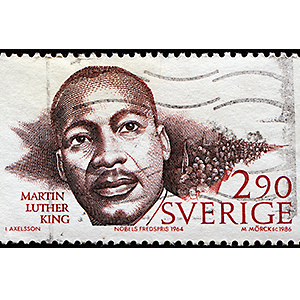The Christmas tree has been boxed if artificial or put to the curb if real,
and we face a new year. Dr. Martin Luther King quotes may abound this time
of year, but perhaps it’s worthy to remember his last Christmas sermon.
“The Christmas hope for peace and goodwill toward all men can no longer be
dismissed as a kind of pious dream of some utopia. If we don’t have good
will toward men in this world, we will destroy ourselves by the misuse of
our own instruments and our own power.”
As the news and rhetoric heat up about racial- and ethnic-related violence,
perhaps it’s time to reflect on what messages we want to send our kids.
These seem like weighty topics to tackle with kids, yet children are
exposed daily to our country’s struggle with race and culture. So, what is
the best way to help children sort through the issues? Behaviorists tell
us, the first rule of thumb about discussing race with children is to model
the behavior you want.
-
Practice diversity. Be a good race-relations role model.
Demonstrate positive race relations in practical ways in your own life by
demonstrating diversity. Ask yourself, do I have friends of other races? If
most of your friends are from your own race and culture, you may want to
consider opportunities for you and your child to interact with other races
and cultures. Attend a different church on Sunday. Observe how they
worship. Find something to appreciate about it and comment on it to your
child.You may find yourself asking, do I openly and verbally appreciate other
races and cultures in front of my child? If you see a television program
about a different culture, use the opportunity to discuss another way of
life and worldview. Find one thing you like about it and state it out loud. -
Listen first. Don’t assume shared understandings about race.
Sociologists assert that children construct differences and similarities in
other ways than adults. Children notice differences quite early in their
development, but it may be for reasons that interest children rather than
how adults define the difference. A teacher noticed that 6-year-old girls
on a playground were not playing with one girl in particular who was
African American. The astute teacher listened first before intervening and
found that the majority of the girls preferred to play with girls who wore
their hair with ribbons instead of girls who didn’t wear ribbons. The
African American girl didn’t wear ribbons in her hair, and she was excluded
from conversations and games. The girls were not excluding her because of
race, but because of ribbons. To adult eyes, the game looked racist, but to
the children controlling the game, it made sense. The teacher then noticed
one girl sharing her ribbons with the African American girl. The teacher
chose to intervene in that moment and praised the sharing behavior. She
talked about inclusion. -
Answer your child’s questions about race and culture in an age
appropriate way.
Psychiatrist Alvin Poussaint, M.D. states that there are two critical
development ages when race and culture questions are likely to occur – ages
6 to 8 years old and the teenage years. These stages are times when the
child’s world is expanding and their values are forming or solidifying.
Responding to a child’s questions at these stages in simple, honest terms
is important. Even a response of “I don’t know” or “let’s read about that”
can show you are open to learning about different cultures, customs and
communities.When your child comes home and declares a classmate has an Asian mom and a
black dad and says, “Isn’t that weird?” You may choose to say, “Not weird,
just different.” When your teen asks what you think about a football team
renaming themselves because Native Americans find “Redskins” to be
offensive, you can use it as an opportunity to discuss your own beliefs
about racial slurs, while demonstrating respect that others might not see
it the same way.
If we heed Dr. King’s words, vision and example, we can intervene on the
divisions in the nation, and in our own homes, every day.

